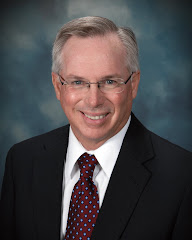News for the 118th District
By Representative Don Hineman
February 27, 2009 Volume 1, Number 6
Energy Bill passes the House
This week the Kansas House of Representatives passed HB 2014, our comprehensive energy bill. It represents months of work by our energy and utilities committee and is one of the more advanced policies in the nation. The bill encourages renewable energy technology, includes true “net metering”, and most importantly establishes reasonable permitting guidelines which will encourage economic development throughout the state. It insures that Kansas will have a dependable source of energy in the years ahead, and will keep energy rates reasonable for all Kansans.
The bill would remove the bureaucratic roadblock that has stymied the proposed expansion of the coal-fired power plant owned and operated by Sunflower Electric in Holcomb. This is critical to the future of Western Kansas. I have provided more detail in the email I sent a few days ago, and that information is also on my blog. The actual bill can be viewed here. The Senate will now consider the bill and the next steps would be conference committee, final consideration by both houses, then presentation to the governor for signature.
Other Interesting Websites
The main website for the Kansas legislature is http://www.kslegislature.org/ From there you can access any number of items, including the text of bills, House and Senate calendars, legislator contact information, and much more.
During committee hearings we hear presentations from many different groups, and occasionally they present information that is available via the internet. Here are a few that caught my attention:
Applied Science and Technology for Reservoir Assessment. Click on the data link or pin for information on Cedar Bluff reservoir.
Kansas Graphic Information Systems for a wealth of map-based information about the state and its resources.
Ventria about a company that is growing genetically modified rice in Junction City, Kansas and using the product to produce human pharmaceuticals.
Kansas DOT - American Recovery and Investment Act, information about the Kansas road projects to be built this year with stimulus money. See page seven for information on the upgrade of Highway K23 in Gove County.
Kansas Bioscience Authority, home page of the authority, which grew out of the visionary Kansas Economic Growth Act of 2004. One of its many success stories has been acting as lead agency and catalyst for attracting the National Bio and Agro-Defense Facility (NBAF) to Manhattan, Kansas.
NBAF, information (obviously) about this $650 million project.
Smoking Ban Advances
The Kansas Senate has passed SB 25, which would institute a statewide ban on smoking in public places. Though there are certain exceptions, this is a very aggressive bill. There can be no doubt that smoking is a detriment to public health, and second-hand smoke appears to negatively impact people who are not smokers themselves. However passage of SB 25 would represent a loss of local control, and there is widespread concern with the broad reach of this bill. The fact is that communities all across Kansas are proceeding to craft public smoking bans that truly fit circumstances in their local communities. I favor that approach, and I am skeptical that SB 25 is the best solution to this problem.
Cowboy Logic: When you drive through a gate, if you have plenty of time you can leave it down. If you’re in a hurry, take the time to shut it.
.
Quote of the Week: “If past history was all there was to the game, the richest people would be librarians" - Warren Buffett
 Swearing-In, and another Kalo Hineman in the House
Swearing-In, and another Kalo Hineman in the House



